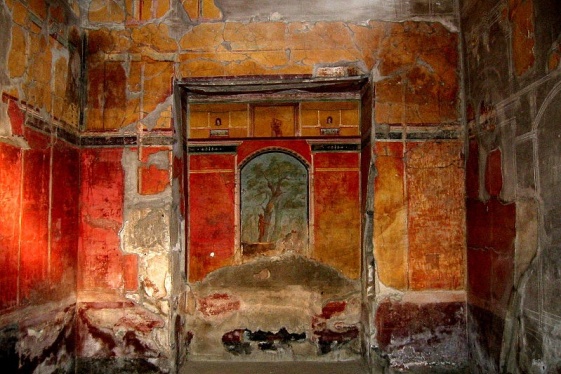

A treasure chest of history and beauty in Friuli Venezia Giulia, it lies in the Province of Udine. Traces of the magnificent Roman Empire rest here in Aquileia - a bulwark against the Barbarian Invasions, launching point for expeditions and military conquests, and large commercial hub.
Given that it was the fourth-largest city on the Peninsula for number of inhabitants, Aquileia became the Capital of the Augustan region X Regio Venetia et Histria under the dominion of Caesar Augustus.
The ancient cardo (north-south oriented street), forum ruins, civic basilica, mausoleum, thermal baths and city walls make Aquileia one of the most important existing testimonials of ancient Roman grandeur.
Indeed, the city was one of the largest and most prosperous political and administrative towns in the Empire, and in light of its state of conservation, is still a very important example of that civilization in the Mediterranean - so much so that it was added to the UNESCO List of World Heritage Sites in 1998 (and also because of the decisive role it played in spreading the Catholic religion).
Located on the banks of the Naissa River (once used to transport exotic goods), this little city was built up along the lagoon west of Trieste. It was founded by the Romans in 181 B.C. as a defense against threats from the Gauls. The ruins of its Roman river port are amazing, and include a quay that is 1,312 ft long, with two docking levels and landing stages paved with stairs (1st century A.D.).
Aquileia owes its good fortune to the numerous roads linking its port to a rich and vast hinterland. This marvelous location bears significant archaeological heritage, explorable by way of the town’s three museums: the Museo Archeologico Nazionale (with many documents dating back to the Roman Era, artisan productions and finds from the ancient city), the Museo Paleocristiano (where the ruins of a large ecclesiastical building are preserved) and the Museo Civico del Patriarcato (protecting sacred wooden and metal reliquaries).
The Patriarchal Basilica is of significant artistic and cultural importance. It is not quite in the town center, but rather parallel Via Sacra, overlooking Piazza del Capitolo together with its baptistery and majestic bell tower.
The oldest nucleus is formed by the Aule Paleocristiane (the Paleochristian Room), built in the 4th Century A.D. by the Bishop Teodoro, with support from the Emperor Constantine. They are lasting proof of the decisive role the city played in spreading Christianity in the early Middle Ages.
The floor mosaics both inside and outside the basilica are magnificent. The basilica also provides access to the Crypt of Frescoes, decorated with rare Byzantine frescoes.
Damage caused by an earthquake of 988 forced the then-Patriarch Poppo to carry out radical restorations in 1031, using Romanesque forms and featuring Carolingian-Ottonian influences. The restorations culminated in the construction of the great Palazzo Patriarcale (later destroyed) and the majestic bell tower, which stands at 230 ft tall and dominates the Friulian countryside.
After further restorations following the earthquake of 1348, the last significant work on the Basilica was carried out in the 16th Century, when Venetian craftsmen and carpenters were called upon to realize the impressive wooden ceiling that can still be admired today. Finally, any visit should include a tour of the Cemetery of the Soldiers who fell in WWI, located just behind the Basilica.
You may be interested
-
"Storia e memorie" at Casa Italiana Sociocult...
The "Storia e memorie" group of 21 students and teachers from Friuli and Sardegna returned...
-
“Audace”, Prosecco Doc Trieste Serena Wines 1...
Refining Prosecco Doc Trieste in its Gulf, using the experience of a large group such as S...
-
“L’America di Irene”: Paola Trappo’s Book on...
The stories of our Italian ancestors are all different, and all alike, all equally fascina...
-
“Studiare in Friuli”
The Convitto Nazionale "Paolo Diacono" WITH THE CONTRIBUTION OF Province of Gori...
-
10 most underrated Cities in Northern Italy
by Elisa della Barba Everyone's first visit, when in Italy, is dedicated to three...
-
10 UNESCO sites in Italy that maybe you don't...
Unknown among these known, the Excavations of Oplontis in Torre Annunziata (Naples), inclu...
-
11 Reasons You Should Be Drinking Prosecco
by Kerin O'Keefe Some say no other beverage defines the Italian philosophy o...
-
15 beautiful bridges you can cross in Italy
by Claudia Baroncelli Beyond monuments and churches, palaces and museums Italy al...










